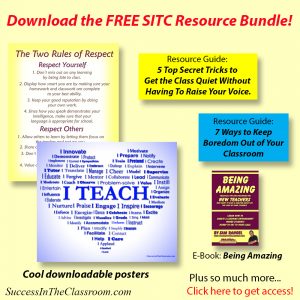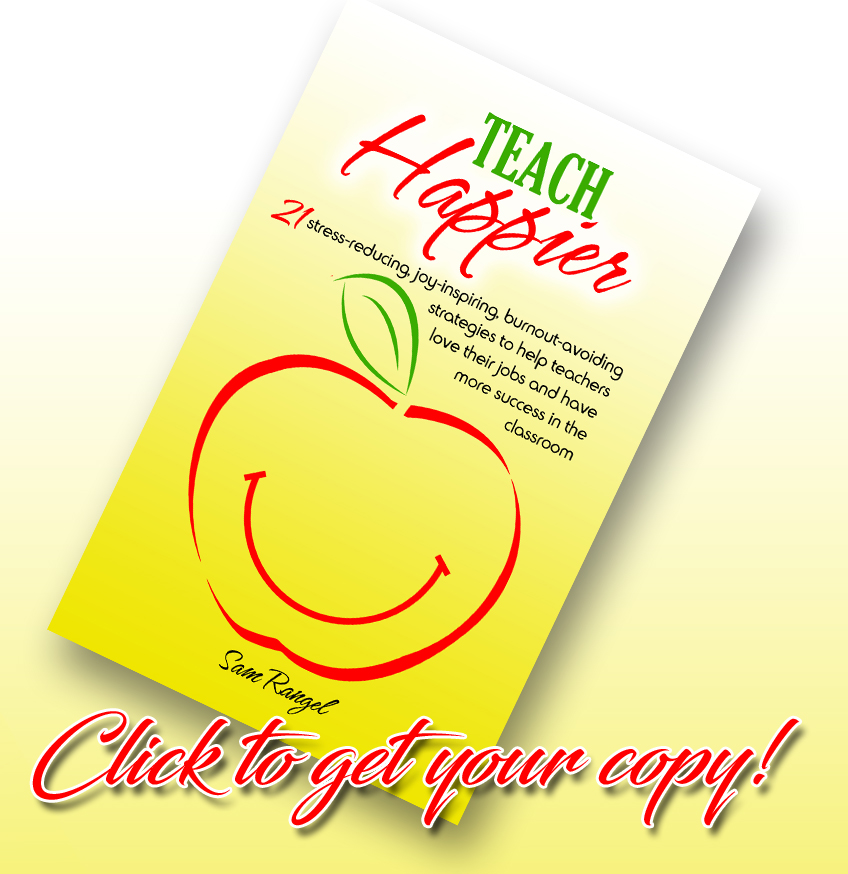
Today, I had to go over some key vocabulary terms in preparation for an upcoming test, but as you know, I hate boring lessons, and vocabulary activities can be boring sometimes – well , most of the time.
So I was thinking of how I could make this lesson less boring, and here is what I came up with:
I called it the ISYGK Treasure Book activity.
Right away, the kids are curious about what this is. I guess I could have called it, Vocabulary Practice, but you can guess what kind of reaction I would have received from my 8th graders.
The kids know by now that I use acronyms in my lesson names, so they started to try and figure out what ISYGK stood for. Finally, I told them.
ISYGK means, Important Stuff You Gotta Know.
Duh!
I then give them each three pieces of paper to fold in half. This makes a little booklet where they’ll write their vocabulary words. I call it a Treasure Book just to make it more interesting. It sounds cool too. I could have called it the Vocabulary Booklet, but that’s just boring.
Then, instead of having the students just copy the definitions out of the book, I added a twist to make it, yup, less boring.
Here are the instructions that I wrote on a big piece of butcher paper stapled to the front wall:
What To Do:
1. Of the 10 vocabulary words, choose 8.
2. Write the book definition for all the words on different pages of your Treasure Book. (Each page has a word with the book definition.)
3. Choose 3 of the words, and add an illustration of the definition. (Use a little color to make it pretty.)
4. Choose 1 other word and write it in Spanish. (Spell the best you can.)
5. Choose 2 different words and turn them into three questions.
6. Choose 2 different words and write the definition in 8th grade language.
I have the list of 10 vocabulary words on another piece of butcher paper.
Making them choose 8, instead of requiring them to do all 10 vocabulary words, does a couple of things.
It gives them the power to choose their own words, increasing the motivation factor. Students will more likely put more effort in an assignment if they’ve been able decide what to do, instead of doing what the teacher has decided.
Also, it allows students who want to get extra credit to do all ten.
Sometimes, I’ll pretend to give them all 10, then at the last minute, out of the goodness of my heart, I’ll say, “I’m in a good mood today. Just do 8.”
They are so grateful.
Right away, I get a lot of students saying, “Mr. Rangel, I don’t know how to speak Spanish. How can I do number 4?”
I tell them that there are several students in the classroom who do know how to speak Spanish. “Ask them to tell you how to say it, and write it down the best you can.”
What happens is that these Spanish-speaking students become the “stars” for the day. It helps build their self-esteem, and in my class, these are the students who are quiet, don’t-want-to-get-involved students.
I have to do a little clarifying when I give out the directions. They get confused with making the questions for number 5. I tell them to take a look at the book definition, and make three questions that are answered in the definition. For example, the definition for Manifest Destiny is: A belief shared by many Americans in the mid-1800’s that the United States should expand across the continent to the Pacific Ocean.
Three questions could be:
1. Who shared the belief?
2. What was the belief?
3. When did this take place?
The whole point of this assignment is to take a normally boring activity and make it a little more interesting.
So that’s what I did today. It turned out pretty good.
I’m always looking for new ideas on how to teach vocabulary. Do you have any? Send me a tip for teaching vocabulary, and I’ll add it to my new website: TipsForNewTeachers.com. If you have a blog or a website, I’ll add a link.
Thanks,
Sam
Photo by: http://www.flickr.com/photos/robynlovescake/ (It’s actually a cake!)



